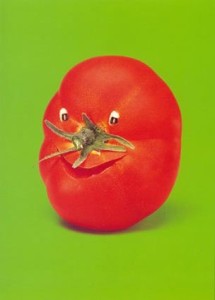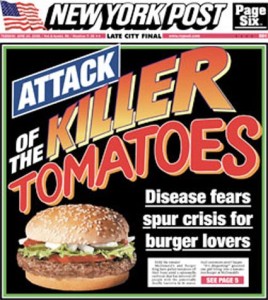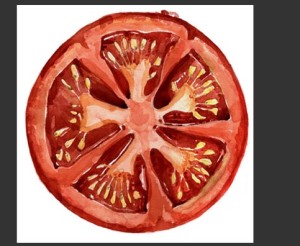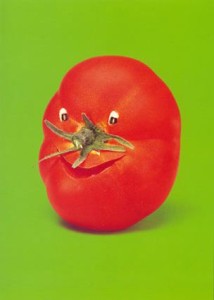In 2015, Minnesota counted 973 people with state-confirmed Salmonella, the most since health officials started tracking in the early 1990s. Cases were up 35 percent over 2014, according to the Minnesota Department of Health, with 115 people affected by the outbreak linked to Chipotle.
 “It was a huge outbreak, the biggest salmonella outbreak [in this state] since 1994,” said Kirk Smith, the health department’s head of foodborne disease investigations.
“It was a huge outbreak, the biggest salmonella outbreak [in this state] since 1994,” said Kirk Smith, the health department’s head of foodborne disease investigations.
The Chipotle case, along with a huge national outbreak last year involving cucumbers, highlights a growing problem: the spread of foodborne disease through produce.
Tomatoes connected to the Chipotle outbreak were traced back to a farm in Virginia, a big tomato-growing area linked to several salmonella outbreaks in the past 15 years.
Chipotle, hit by a series of foodborne illness outbreaks last year, did not return calls for comment.
Chipotle was cooperative in Minnesota’s investigation, Smith said, and analyzed its own supply chain data to determine that tomatoes linked to the outbreak likely came from a farm in Virginia.
According to the health department, the tomatoes were sold by Lipman Produce, an Immokalee, Fla.-based company that on its website bills itself as North America’s largest open field tomato grower.
Lipman’s CEO didn’t respond to requests for comment, but in a response to a lawsuit, the company denied that it was the source of the outbreak in Minnesota.
The Virginia tomatoes were sold to a produce wholesaler that packed or repacked them, and then moved on to a distributor that delivered them to Chipotle. Where exactly the tomatoes were tainted has not been identified, and the U.S. Food and Drug Administration (FDA) says it’s investigating.
Smith and other foodborne illness experts say contamination of produce usually occurs in unsanitary packing houses or in the fields, particularly through contaminated water.
From 1990 to 2010, there were 15 multistate salmonella outbreaks linked to raw tomatoes; four were traced to farms or packing houses in Virginia.
 Virginia’s tomato industry is centered on its eastern shore, a peninsula framed by Chesapeake Bay and the Atlantic Ocean. Its gull and geese populations have been fingered as possible carriers of salmonella, as have chicken farms and processors to the north.
Virginia’s tomato industry is centered on its eastern shore, a peninsula framed by Chesapeake Bay and the Atlantic Ocean. Its gull and geese populations have been fingered as possible carriers of salmonella, as have chicken farms and processors to the north.
Whatever the reason, surface water and sediment in the area appear to be “long-term reservoirs of persistent and endemic contamination of this environment,” according to a study published last year in Frontiers in Microbiology.
The largest U.S. foodborne incident in 2015 was a Salmonella Poona outbreak that sickened 888 people nationwide, killing six. That outbreak included 43 illnesses in Minnesota, though no deaths.
The culprit: cucumbers imported from Mexico. It was the third significant U.S. outbreak of salmonella linked to cucumbers in three years.












